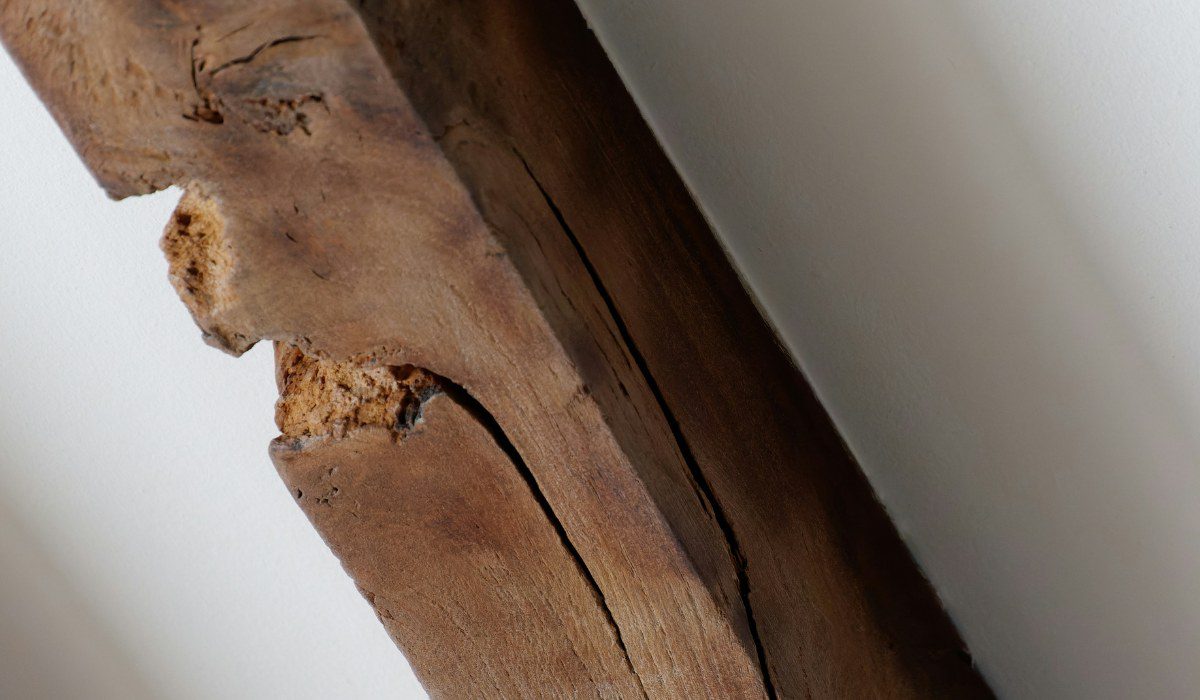Termite infestation is a highly common problem in households. They can prove to be a menace in the long run and have adverse effects on your home’s structural integrity, compromise safety and cause immense financial losses if not addressed timely. Therefore, it is crucial to identify the signs of termite infestation as soon as possible and take appropriate action to terminate the infestation. Additionally, proper knowledge of the measures to stop a termite infestation is also required for prompt action. In this article, you will discover how to identify the signs of a termite infestation and how to get rid of it.
See also: How to control pests at home?
Signs of termite infestation
The first step to getting rid of a termite infestation is to identify its source. But how can you tell if there is a termite infestation? Here are the warning signs to look out for:
Mud tubes
The most common sign of a termite infestation is the mud tubes built by subterranean termites to avoid predators and maintain a humid environment. These pencil-like tubes are made of soil and wood particles and might appear along the foundation, walls, or exposed wooden spaces as a sign of an infestation.
Swarmers
Swarmers are winged termites that appear in large numbers during the mating season. They are generally attracted to light and can be found around windows, doors and light fixtures. Once settled in swarms, they shed their wings which you may find discarded on the surfaces around the infested area.
Wood damage
Termites thrive by consuming wood. In the process, they leave a thin outer layer of the wooden surface that might not appear unusual. However, on tapping on the suspected area with a screwdriver, if it sounds hollow, the wood may be damaged. Additionally, inspect for small holes or tunnels in the wood as a sign of infestation.
Frass
Drywood termites have the tendency to push faecal pellets known as frass outside their galleries. These tiny elongated pellets can accumulate in small piles beneath infested wood. If you find such piles of light beige to dark brown pellets underneath the surface, consider it as a sign of termite infestation.
Sagging floors or ceilings
Termites can weaken the internal structure of wood and thereby cause the floors and ceilings to sag. Keep a check on the levelling for any irregularities to spot an infestation. Wooden support beams are highly prone to this effect and it might lead to structural issues if not addressed in time.
Soft or crumbling wood
After consuming the wood from within, termites often leave it with a blistered or darkened appearance. Additionally, on application of pressure, the infested wood tends to give way easily and crumble. This crumbling can be an indication of termite damage.
Moisture and mould
Humid environments are ideal for termites to thrive. Excessive moisture can lead to mould formation on walls and wooden surfaces that tend to attract termites. Any signs of water leaks or high humidity levels should be regularly inspected to avoid a termite infestation.
Peeling paint or bubbling wallpaper
As termites create galleries below layers of paint or wallpaper, they can cause peeling off or bubbling on the walls. These are signs of termite activities behind the wall that call for immediate attention.
Remedies for termite infestation
Now that you have identified an infestation, what next? How can you troubleshoot this problem? Read on to find out:
Professional inspection
Hiring a licensed pest control professional for a thorough inspection of your property for an infestation might give you deeper insight into the problem. Their expertise can help indicate the precise extent of infestation, local termite colonies and help design an appropriate treatment plan best suited for your problem.
Treatment options
An appropriate treatment plan should be chosen according to the severity and type of infestation. Chemical treatments generally involve creating a barrier around the structure against termites. Termite baits attract termites away from the infested structure, leading to their elimination. Tenting the structure and fumigating with gas is also an effective treatment plan.
Localised treatments
For small infestations on specific areas of the structure, targeted treatments are a viable option. These involve foam applications or injections that can deliver the pesticide directly to the termite gallery, thereby leading to their elimination.
Structural repairs
Merely eliminating the termites is not enough. If the infested structures are not replaced, they might pose security hazards. Removing and replacing damaged sections of wood is highly crucial. In case of extensive damage, comprehensive reconstruction of the structure is advisable.
Moisture control
Termites are attracted to and thrive in moist environments. If you find any water leaks or plumbing issues, fix them immediately without fail. Also ensure proper drainage around the structure to get rid of sources of excess moisture.
Preventive measures
To reduce the risk of future infestation, implementation of preventive measures is necessary. Schedule periodic inspections by professionals to spot signs of infestations in time. Treat vulnerable wooden structures with termite-resistant chemicals to keep termites at bay. Treating the soil around your home to create a protective barrier also helps.
Termite-resistant materials
Once the termites are eliminated, go for termite-resistant materials while reconstructing the structure or install physical barriers like metal termite shields to keep termites at bay in the future.
Landscaping adjustments
Making minor landscaping changes, such as maintaining a buffer zone between soil and wooden structures, goes a long way in repelling termites. Avoid direct contact between wood and soil as much as possible and keep plants and mulch away from the foundational structure.
Professional maintenance plans
Opt for a professional termite maintenance plan for better protection. Such plans involve regular inspections and preventive treatments that can help prevent infestations by providing long-term protection.
FAQs
How can I tell if my home has a termite infestation?
Keep an eye out for signs such as mud tubes, discarded wings, hollow or blistered wood, frass or swarms of flying termites to identify an infestation.
What type of termites are most common to infest homes?
Subterranean termites, drywood termites and dampwood termites are most common in homes. Subterranean termites create mud tubes, drywood termites attack dry wood and dampwood termites are attracted to moist surfaces.
Are termites dangerous to humans?
Termites do not have any direct effect on human health. However, they can cause structural damage to homes, compromise safety and lead to immense financial losses.
Is it possible to treat a termite infestation by myself?
While DIY solutions might help temporarily, they do not provide complete eradication and long-term protection. It is recommended to consult a professional to determine the extent of infestation and proper treatment.
How long does termite treatment take?
Depending on the severity of the infestation and the method of treatment, it might last for a few hours to a few days, the latter generally requiring the occupants to vacate the premises while the treatment lasts.
How can I prevent future termite infestation?
Preventive measures such as regular inspections, addressing moisture issues, using termite-resistant materials and adopting suitable landscaping practices can help keep future infestation at bay.
How often should I have my home professionally inspected for termites?
In humid regions prone to termite activity, annual professional inspections are recommended. Alongside this, periodic self-inspections every month can help identify early signs and seek prompt professional intervention.
| Got any questions or point of view on our article? We would love to hear from you. Write to our Editor-in-Chief Jhumur Ghosh at jhumur.ghosh1@housing.com |







